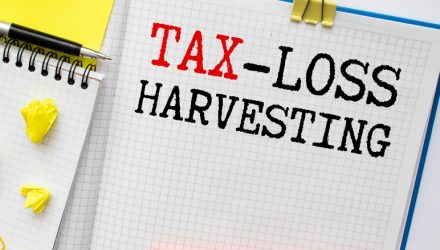ETF tax-loss harvesting offers significant advantages for advisors and retail investors. Tax-loss harvesting picks up around January and at the start of tax season, but has merit all year. How, then, does harvesting losses relate to the so-called “January Effect?” Stocks ring in each new year with a consistent and measurable boost, providing a teaching moment for investors.
So much of the inherent appeal of tax-loss harvesting stems from taking losing securities and using them to boost winners. Investors and advisors should remember, however, that those losses can only offset so much. According to American Century Investments, selling only losers and keeping a security or ETF with big, embedded gains has its own risks.
See more: “Best ETF Trading Practices for Advisors: Using Block Desks“
So when the January Effect kicks in each year and pushes those gains up even further, remember taxes. The January Effect occurs in part due to other investors reinvesting their losses into new ETFs, according to American Century. That should push advisors and clients to think about how they plan to respond to that boost and whether they want to carry it all year.
ETF tax-loss harvesting can help. American Century Investments offers a suite of ETFs, including several from up-and-coming Avantis Investors that can be a destination for tax loss flows. Whether that’s in exciting fixed income offerings available right now or in equities, tax-loss harvesters have some options.
The Avantis U.S. Equity ETF (AVUS) recently hit $4 billion in ETF AUM. The strategy charges just 15 basis points and actively invests against the Russell 3000 benchmark. AVUS has returned a solid 2.6% YTD, while also adding about $393 million in the last three months, according to VettaFi.
Investors have all sorts of options out there for tax-loss harvesting. The key lesson, however, is not just to keep an eye on solid ETFs in which to reinvest. Investors need to remember that nothing gold can stay, and that those embedded gains can’t, either. Keep an eye on the options out there to move into should the time come to sell on those gains.
For more news, information, and analysis, visit the Core Strategies Channel.


